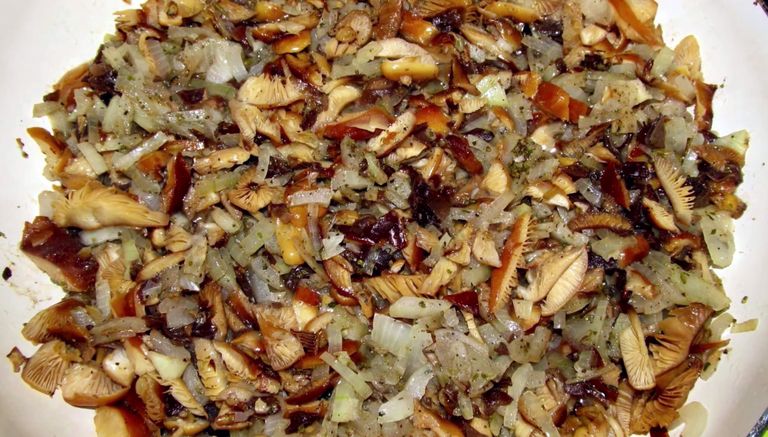
Velvet shank is not afraid of frosts.
This is one of the few cases in nature where the fungus comes back to life after being fully frozen and thawed. The Velvet shank tube is an example of this. This is because it contains substances which enable it to do so.

This allows it to function in low and negative temperatures.
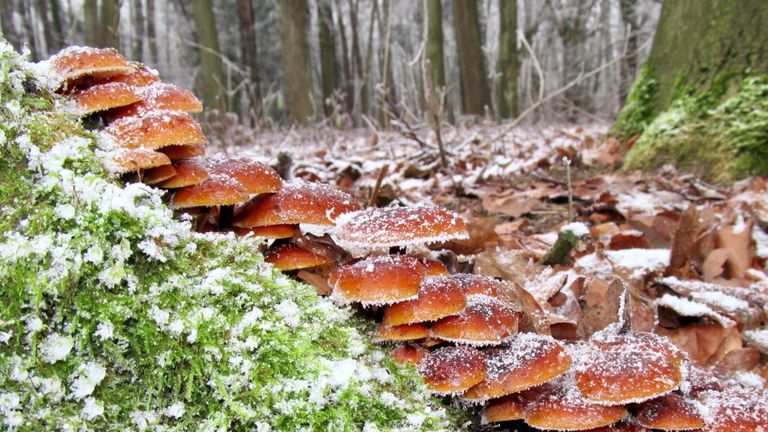
Velvet shank (Flammulina velutipes)
The cap of this mushroom can reach up to 12 cm in diameter. It is orange yellow, honey yellow, and later brownish yellow.
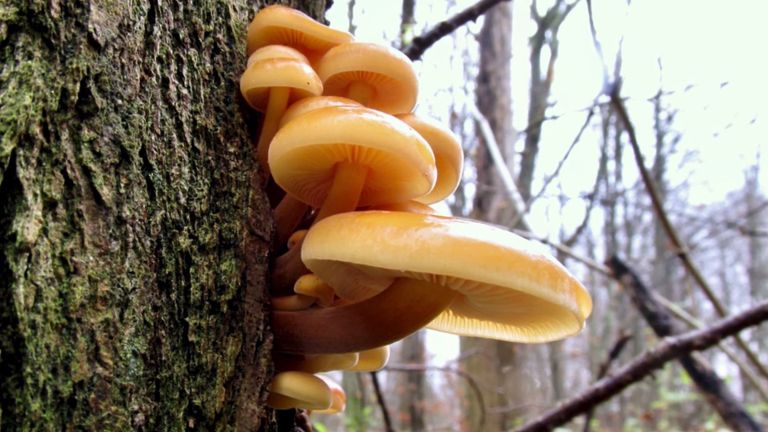
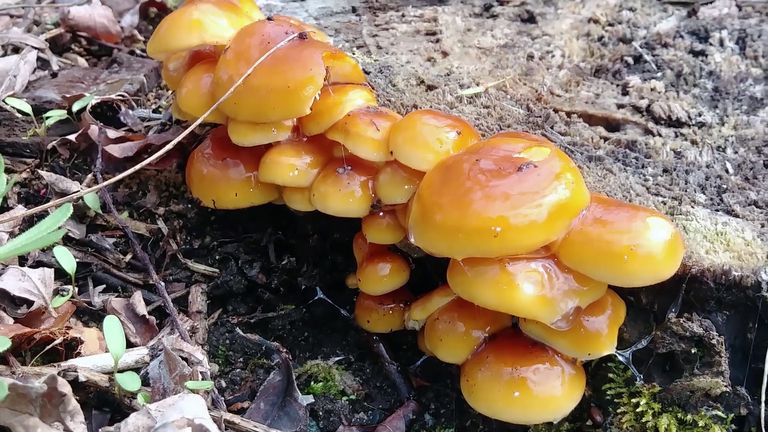
The center of the hat is usually darker. The surface is slippery, slimy, smooth and shiny.

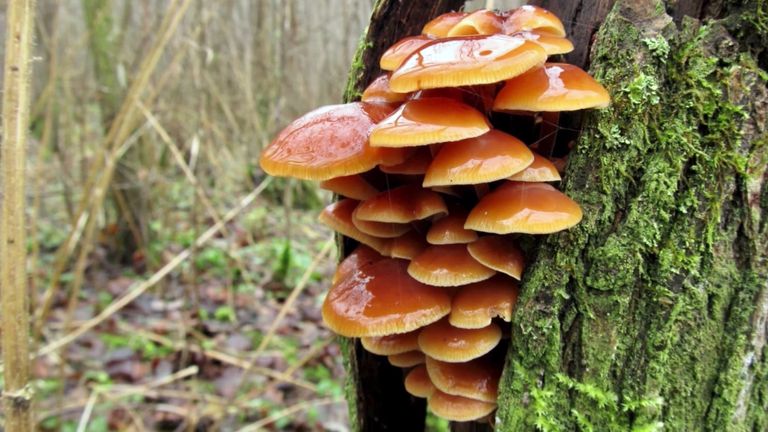
When the fruiting body is old, it is very wavy.
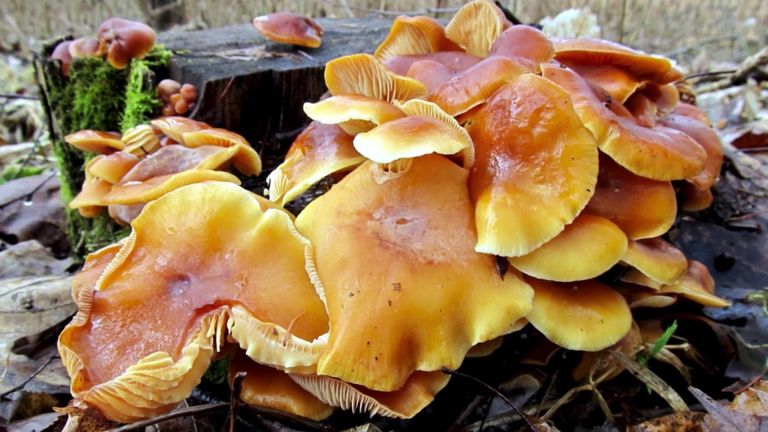

The blades of the fungus are white in color, turning yellow with time. They are sparse of various lengths, and the legs grow.
The leg is distinctive and is the hallmark of this mushroom. It has a yellowish color at the top, and the closer to the base of the mushroom the color darkens to reach a dark brown or even black color at the bottom of the mushroom.
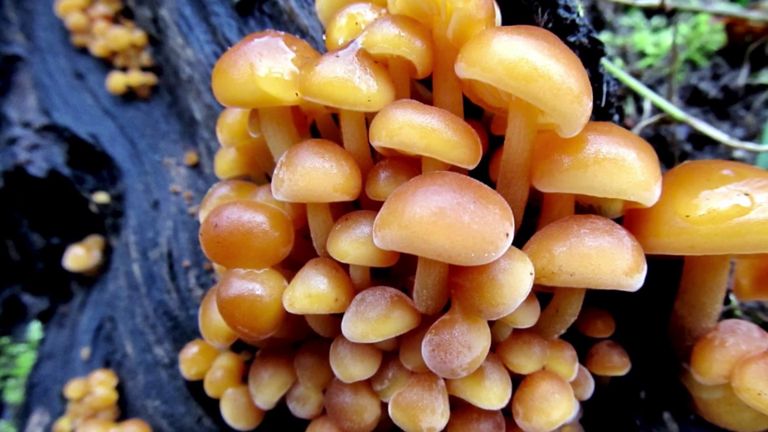
The shape of the stem is cylindrical, the stem is empty inside.
The mushroom flesh has a slight mushroom smell and taste. It is white, cream, then yellowish in color, quite thin, and does not change color when cut.
Flammulina velutipes is a very widespread fungus. It appears in autumn and grows even in frostless winters.


They grow on the wood of deciduous trees, mainly alder, poplar and sometimes beech. They grow in clumps.
Application - very good edible mushroom. Only hats are suitable for consumption, as the legs are fibrous and stringy.
A short recipe

Young enoki taste good fried in butter with the addition of onions and spices
Velvet shank on supermarket shelves?
Few people know that Velvet shank is grown on a massive scale.
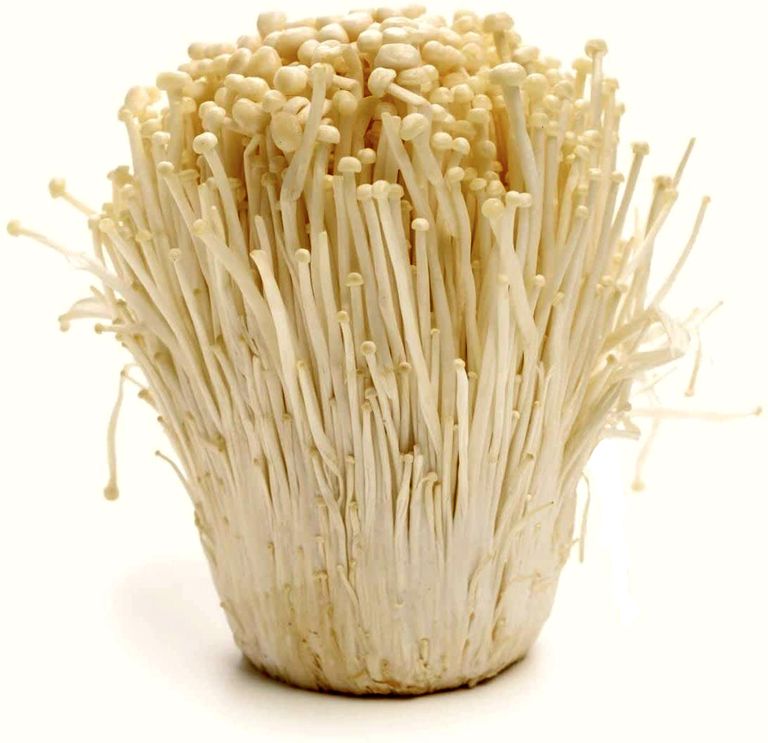
Popular in Asian cuisine, Enoki mushrooms, or called Enokitaki in other regions, are the equivalent of a winter flame that grows in natural conditions.
Where does such a difference in appearance come from
Enoki or Enokitaki mushrooms are grown in a dark room and as they grow the caps remain undeveloped and the stem becomes long and thin. Due to the lack of light, the fruiting bodies are pale, almost white in color and do not resemble Flammulina velutipes growing in the wild. They are devoid of virtually any nutritional value and are often packed with chemicals.
Enjoy 😉

